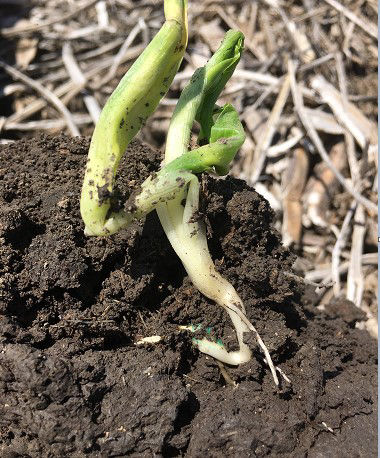3 MIN READ
Considerations on Cold and Corn Planting
April 23, 2023
- Deciding to plant when soil temperatures and forecasted temperatures are below 50° degrees F. This must be made on a case-by-case basis and opinions may vary widely.
- Continuing to plant through cooler temperatures can keep planting operations moving; however, when planting into cold soil, corn kernels will be slow to germinate, plants will be slow to emerge, and the risk of seedling death is elevated.
Asking the What Ifs:
There will always be risk involved, no matter when a grower decides to plant. The few Ifs will always come to mind.
- Is it risky to plant into cold soil conditions? Yes.
- Is it risky to plant corn late in the season? Yes.
- Will the crop achieve a better stand if there is no stress? Yes.
But many factors affect the amount and timing of environmental stress. Determining the greatest risks are judgement calls that vary from one grower to the next.
Factors to Consider:
The calendar date in relation to your own planting progress.
- Soils are wetter than ideal.
- Heavy rainfall in the near-term forecast.
- Comfort level with rate of germination (slower or faster depending on soil temperatures).
- Late planted corn vs. cold planted corn.
- Ample soil moisture in the next coming weeks.
- Check with local seed dealers about cold tolerance of corn hybrids.1
- Cold tests determine the seed availability.2
These above-mentioned factors could impact each operation differently. However, certain facts relating to corn planting and management must be taken into consideration when deciding to plant into less-than-ideal conditions.
Corn Germination and Quality:
- Corn requires a 50° F of soil temperature to germinate.
- Planting into soil with less than 50° F of soil temperature will cause the seed to sit dormant, and lead to increasing seed vulnerability to diseases, insects, and animal predators.
- In cool conditions, corn may not emerge for 3 to 4 weeks.3 It takes about 90-to-120-degree days for corn to emerge at a base of 50° F.
- High quality seed treated with seed treatments can better handle stress, and eventually increase the emergence probability.
- Delayed planting can allow warmer soil temperatures for faster germination and emergence of corn.
- Cold and water-saturated soil can cause seed to be affected by imbibitional chilling. Imbibitional chilling injury can occur when dry corn seeds swell after absorbing (imbibing) cold water from rain or melting snow within 24 to 36 hours after planting.2,5 The cold water causes the cell membranes to become rigid and rupture, and germination does not occur. The non-germinated, swollen seed dies and results in lowered plant population.
- Cold soils or large variations in soil temperatures during the germination process can cause the mesocotyl to become deformed or have a corkscrewed appearance(Figure 1).2 This can occur when healthy mesocotyl tissue continues to grow while damaged tissue does not.
- The likelihood of obtaining good emergence when planting into cool soils increases when little or no rainfall occurs between planting and emergence.4

Management Options:
Early planting allows the opportunity to replant if emergence is poor or stand is inadequate.
Takeaway Points:
We cannot predict the future to assure a perfect crop stand, but we can analyze conditions and assess risks to help in determining the best corn planting options.
Sources
1Knox, S. 2018. Cold germination test for corn and soybeans. Crop Watch. Institute of Agricultural and Natural Resources. University of Nebraska-Lincoln. https://cropwatch.unl.edu/2018/cold-germination-test-corn-and-soybeans
2Elmore, R., Specht, J., Ress, J., Yang, H., and Grassini, P. 2018. Cold soil temperature and corn planting windows. Crop Watch. Institute of Agricultural and Natural Resources. University of Nebraska-Lincoln. https://cropwatch.unl.edu/2018/cold-soil-temperature-and-corn-planting-windows
3Thomison, P., Paul, P., and Hammond, R. 2015. Corn planting nearing completion—time to troubleshoot emergence problems. The Ohio State University Extension. C.O.R.N. Newsletter. https://agcrops.osu.edu/newsletter/corn-newsletter/2015-14/corn-planting-nearing-completion
4Nafziger, E. 2015. Planting into cool soils—yes or no? University of Illinois. The Bulletin. https://farmdoc.illinois.edu/field-crop-production/crop_production/planting-into-cool-soils-yes-or-no.html
5Nielsen, R. L. 2012. Early planted corn and cold weather. Corny News Network Articles. Purdue University. https://www.agry.purdue.edu/ext/corn/news/articles.12/EarlyCornColdWthr-0412.html
1222_64397